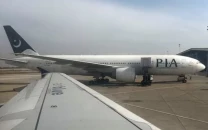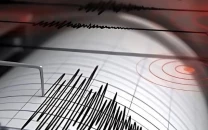A tale of two escalations
.

In any conflict between two countries escalation strategy controls the direction of the engagement. The initiation of conflict and its escalation depend upon who is in control of it and how it can be shaped or reshaped to dissipate the will of one's adversary. Once a conflict is started, the aggressor sets the benchmark and tone of its complexity.
The defending state can retaliate with a range of possibilities depending upon its historical friction with the aggressor, the dynamics of its internal security environment, its governance cum administrative structure and more importantly strength of its leadership. There are however two types of escalations which can happen in modern day warfare. The first one occurs in physical space while, side by side, the other unfolds in non-physical medium at multiple levels.
There are regions of convergence and divergence between the two escalations. The friction between these areas can provide room for future conflicts between two countries. A country which manages to expand its area of convergence between these two escalations can in fact strengthen its position locally and increases morale of its forces.
A large island of divergence between physical and non-physical escalations is a potential source of discomfort among the leadership, security organizations and public in a country. It can push such a state towards adventurism in coming days. Any effort to offset it or defuse it in any manner can be a win-win situation for people of both countries.
In a typical Pak-India scenario, India has upped the ante this year as compared to its response in 2019. This time round, it was inside Punjab and not in or around AJK. The other parts especially Balochistan and KP were deliberately omitted on multiple strategic counts.
Perhaps it was a rational Indian choice not to target these regions as it might trigger anti-India sentiments where militancy is quite active. As a result, India started off at a higher level on the escalation ladder. The reaction to such multiple hits inside Pakistan had to come in a tit for tat fashion.
However, Pakistan's response was mainly triggered by a barrage of attacks on its air-strips which also took its military by surprise in terms of target selection and attack intensification. In physical medium, de-escalation appears to be a permanent feature and actors, regional or international, are actually looking for an opportunity to synchronise the aggressor and the aggrieved.
In the present conflict, many actors appeared now and again, striving for some sort of hostility adjournment, permanent or temporarily. Since, the ceasefire has resulted into mutual talks it is important to gauge the outcome of these engagements. Essentially, in case of any such like future occurrence, a modality needs to be established in which the two sides can examine the evidence and discuss it before reaching at a conclusion.
A unilateral assessment of situation is bound to create friction leading to a future conflict. The questions arising are: Is the current de-escalation temporary or permanent? Is another dispute building up behind the scenes owing to the incomplete de-escalation mechanism?
The current conflict has also depicted another escalation which has taken place in cyber medium. Claims, counter claims, truths and lies - in different formats and on various platforms — have inflicted a series of psychological blows on both sides. It goes on polluting the minds, causing confusion, frustration and fear as well.
People usually believe in AI-generated images like old videos with new captions to create a false perception of escalation. Anything can happen in cyber space and anyone can say anything purposefully to modulate minds of citizens of both countries. Sometimes real facts and first-hand information are also transmitted on it, giving rise to new dimensions and proffer interesting avenues for analysis. This escalation is continuing in non-physical dimension and may not subside in coming days.
The friction between individuals or groups on a cyber platform can become a potential source of mistrust among communities and ethnic groups living in different geographical dispositions. The post-ceasefire consultation should take stock of it too.
















COMMENTS
Comments are moderated and generally will be posted if they are on-topic and not abusive.
For more information, please see our Comments FAQ